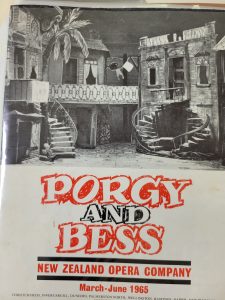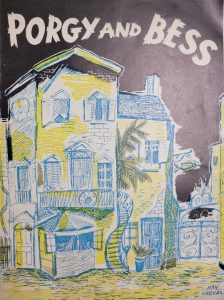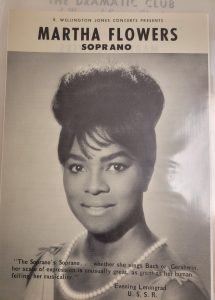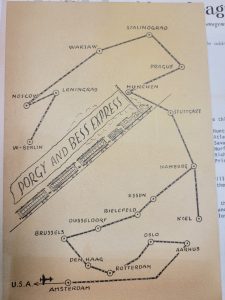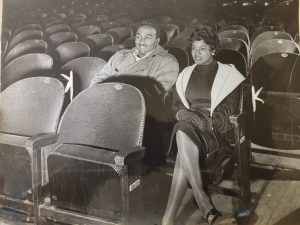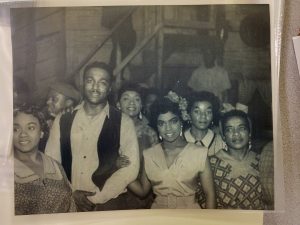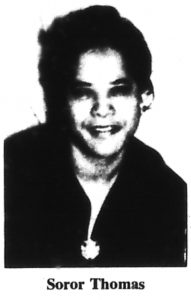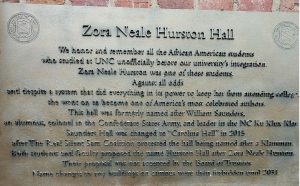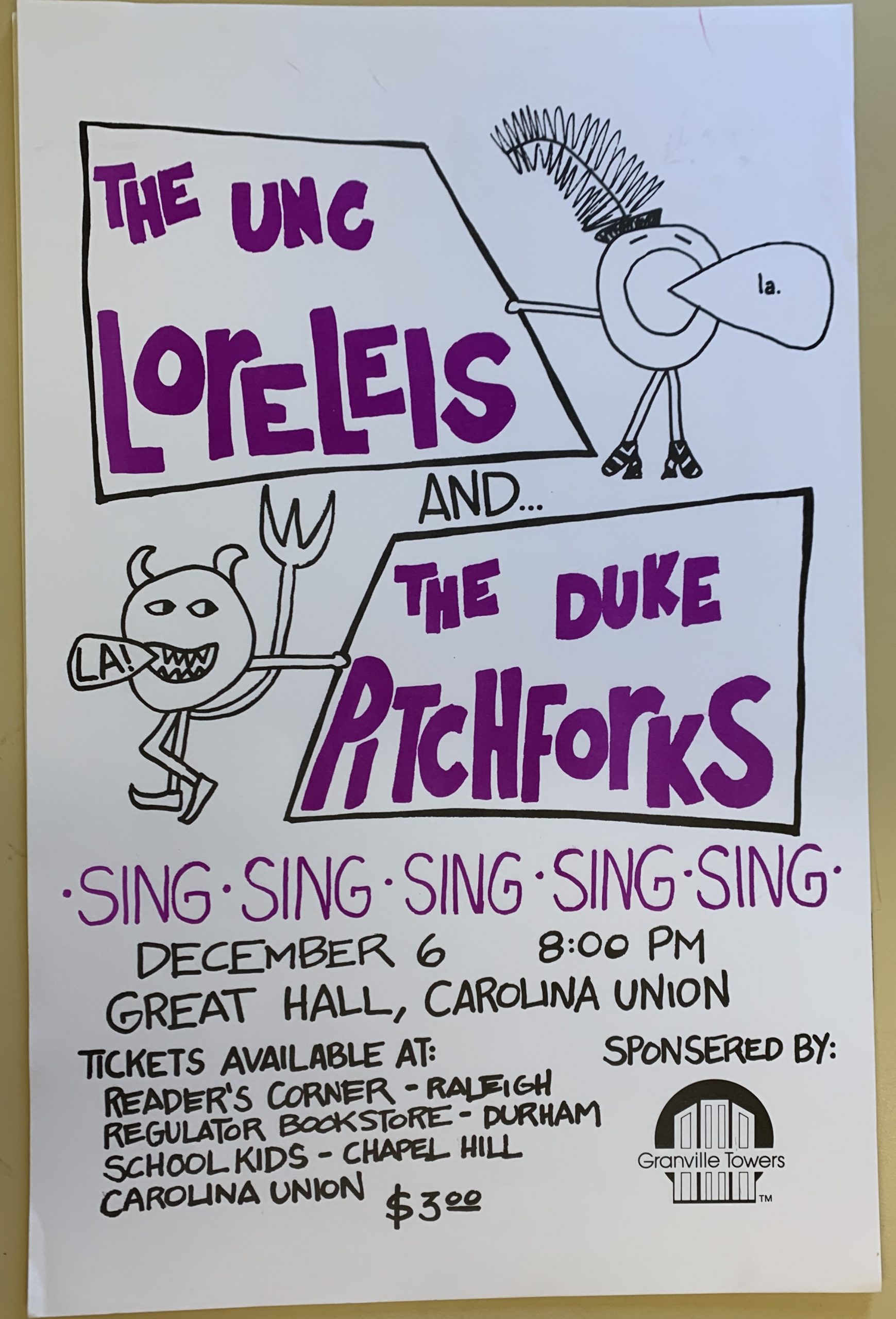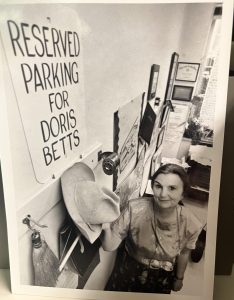
In the University Archives, folders labeled “Traffic” or “Parking” are common in administrative collections, usually filled with letters complaining about campus parking challenges. We found one of these folders, labeled “Parking, 1967” in the records of Chancellor J. Carlyle Sitterson. One of the letters it contained seemed similar to so many others, until we noticed the name of the writer: Doris Betts, the acclaimed novelist and longtime UNC faculty member in the Department of English.
In September 1967, after receiving a $1 parking ticket for failing to display her parking sticker, Betts wrote to the Chapel Hill Police Department, with a copy of her letter to Chancellor Sitterson. “Having paid the dollar,” she wrote, “I now feel entitled to complain.”
In what is easily the most literary parking complaint we’ve ever read, Betts addressed the absurdity of receiving a ticket while parking in order to pick up her faculty parking permit. Betts compares the campus parking regulations to scenes from Alice in Wonderland, with the police department in the “position of the gardeners in Wonderland who—discovering that they had planted a white rose bush in the spot the queen has ordered a red one—were busily coating the blooms with red paint.”
Betts also raises an important point that is likely even more relevant today: the burden of long commutes and parking challenges falls largely on those students and staff who cannot afford to live near campus. The full letter, transcribed below, is worth reading in its entirety.
September 28, 1967
Chapel Hill Police Department
Chapel Hill, North Carolina
Gentlemen:
I enclose my fine of $1.00 for the parking ticket issued yesterday by Officer 3 for my car . . . parked in a faculty zone while I was teaching classes but not yet marked with the new permit sticker. Having paid the dollar, I now feel entitled to complain.
I commute to teach classes in the University English Department, and since I am not on-campus between Wednesday and Monday, there is an inevitable time-lag in the receipt of red-tape requests and the compliance with red-tape requests. I have paid my parking permit fee for the new sticker, to replace last year’s F. sticker for which Officer #3 must have noted on the bumper, but in order to go to the department and obtain this sticker on my next teaching day, it was necessary—oddly enough—to leave the car in a parking space. I was so enchanted to find one in time, for a change, to be in the office at the time set for student conferences, that I scooted right in and parked in it without considering this hazard of time-lag. The sticker will be on the bumper next time your officers pass my car. Whether it will be PARKED anywhere is, of course, a very different and more complex question.
On my first day of classes, having driven over from Sanford, I then put nearly and equal amount of mileage on the car by motoring up and down the lanes and lots of the U.N.C. campus in search of some place to be rid of the thing. When I finally did park and hike some distance to my department office, I encountered both my department chairman and the provost, who responded to my grumbling by saying all would be different as soon as I paid the new fee and obtained the new parking permit.
Now, however, time lags and all, this begins to sound more and more like Alice in Wonderland, like the Queen of Hearts passing sentence first and having a verdict second. I am not clear why a permit and a sticker ten feet high will manufacture a space where no space existed without said permit. In actuality, I have paid $5 for the privilege of driving around just as much and just as often and an extra dollar for the privilege of meeting the student conference on time and being delayed in picking up the sticker. While some students and lithe young faculty members, residing in Chapel Hill, may be able to reach classes on-foot, on-Honda, and on-Schwinn, those of us who commute must come in automobiles of necessity. I assure you, that if you drove on highway 15-501, behind school buses and brick trucks, behind trucks which showered your windshield with sand and poultry feathers, and cars full of nice old ladies who straddle the center-line in the interests of moderation and safety, sniffing your own burning gasoline in the air of Lee, Chatham, and Orange Counties—and THEN arrived, minus the cost of a permit and the cost of a traffic ticket unable to find a plain legal rectangle within reasonable distance of your duties, you’d be in a cross mood, too.
Gentlemen, the situation is not your fault; Officer 3 is doing his duty in abiding by understandable campus rules; I submit the fee fully understanding the justice of it. But the purpose of the letter, with its carbon to Dean Sitterson, is to relieve my feelings and find a more suitable outlet for them than Muttering Under One’s Own Breath.
I call your attention to the editorial in today’s Greensboro Daily News, which seems to be based on such common sense that it comes like the voice of Alice into the Queen’s croquet game and trial.
By the way, the student conference I met yesterday was also delayed. The student came out to his own car to find that HIS sticker had been neatly peeled off his bumper—either that, or the glue proved unreliable. He had been by to collect, he though a duplicate sticker, since he had paid a $10 registration fee and will actually be graduating in January. He was told that, for the coming 3½ months, he must buy a second sticker, at an additional $10. They are trying to discourage black market track in stickers, he said. The two of us had a difficult time getting off this subject and onto the purpose of our meeting, which had to do with literature and the rhetoric of fiction. Had I known that at that very time Ticket Number 40457 was even then nestling under my windshield wiper, I doubt we would have managed to deal with the short story form at all.
Gentlemen, you are in the position of the gardeners in Wonderland who—discovering that they had planted a white rose bush in the spot the queen has ordered a red one—were busily coating the blooms with red paint. As such, you have our sympathy. It is not much help to you, any more than my complaining is much help, but I hope it makes you feel better. I do.
Sincerely yours,
Doris Betts
(Mrs. Lowry M. Betts)

